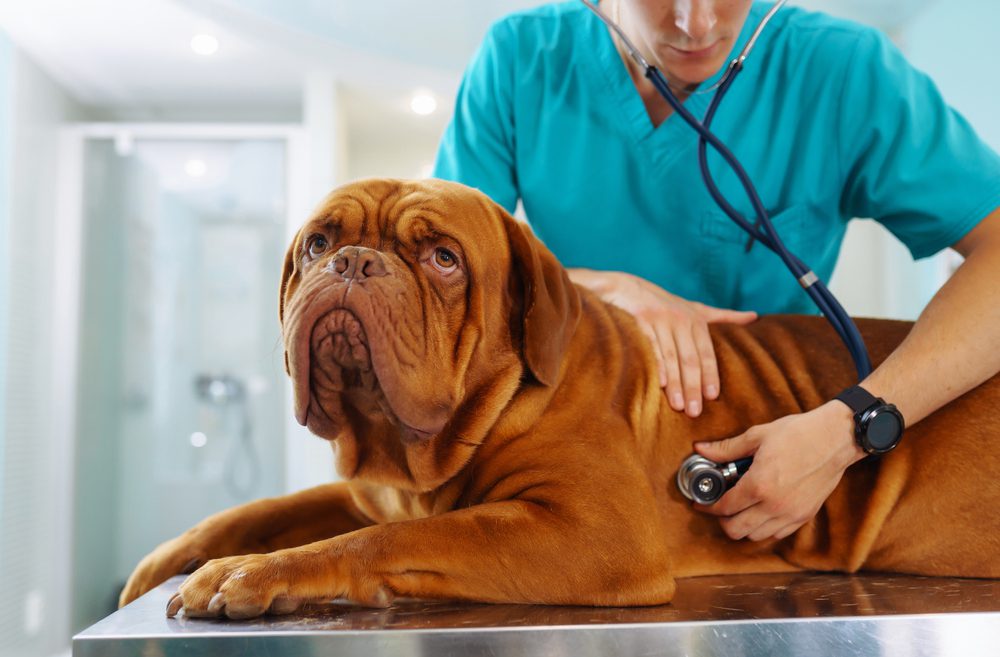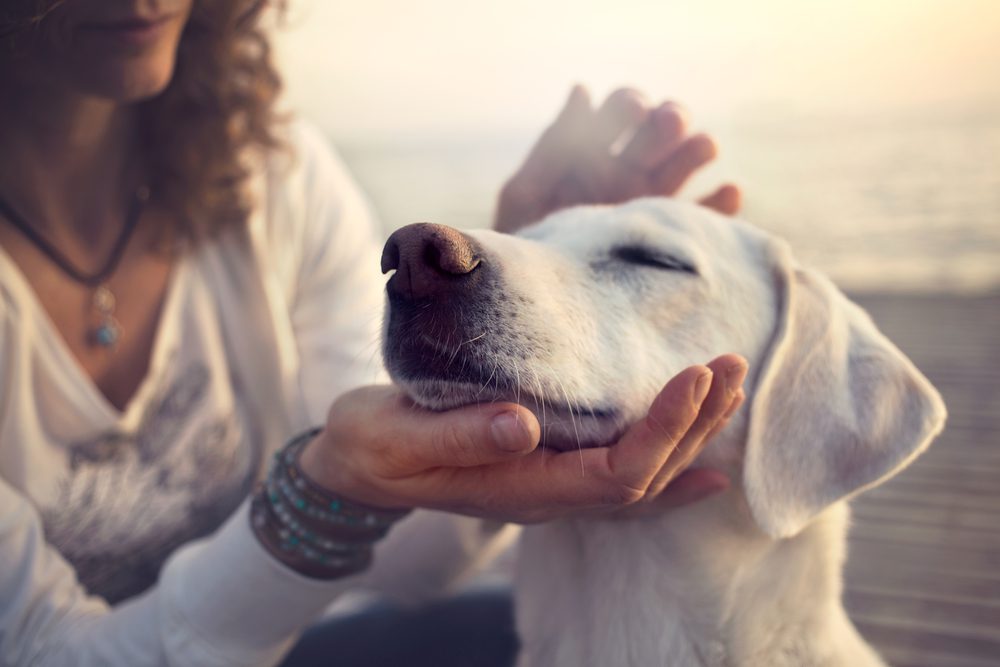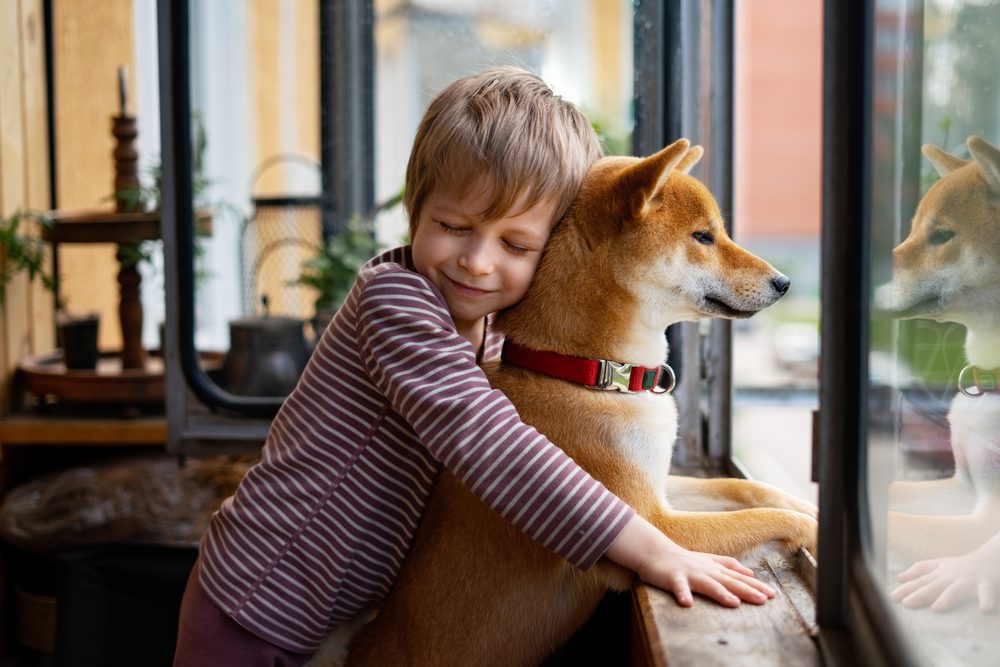How to Tell if Your Dog is Depressed

Table of Contents

Dog Depression: Can Dogs Get Depressed?
Yes, dogs can get depressed. Your canine’s brain is similar in structure to your own. In the 1980s, Nicholas Dodman of the School of Veterinary Medicine at Tufts University realized that dogs could experience the same chemical and hormonal changes that trigger depression and anxiety in humans.
Fast forward a few decades, and we now have veterinarians who recognize that your pet can experience severe emotions from depression, anxiety, and irrational fears and phobias, to compulsive behaviors and obsession.
Dog owners attuned to their pet’s behavioral changes and needs may pick up shifts in their pet’s demeanor. To understand your animal companion, you need to recognize the symptoms of depression in your pet and know how to help them.
Signs of Depression in Dogs
Below we’ll look at dog depression symptoms.
- Loss of interest in things that used to thrill and bring joy to your dog
- Reduced activity levels and desire to play
- Oversleeping and lethargy
- Loss or changes in appetite
- Increased irritability
- Inappropriate accidents around the home
- Low mood and sorrowful body language
- Excessive licking that brings comfort
- Clinginess or social withdrawal
- Reduced vocalization and boisterousness
- Uncharacteristic wining or howling (also signs of anxiety)
Ruling out Pain or Underlying Medical Conditions
Many symptoms of depression are also seen in dogs with chronic pain and ill health. If your dog’s behavior ticks off many of the boxes for signs of depression, your best first move is to call your veterinarian.
Only once your veterinarian has ruled out any underlying medical conditions can you assume depression and discuss appropriate treatment.
Stress from depression can also trigger the emergence of underlying medical conditions, so if your dog is diagnosed with depression, it’s vital to resume treatment as soon as possible (whether medical or behavioral). Helping your doggy with their depression can save you from other medical costs.

Evaluating Quality of Life for Dogs in Palliative Care
Older dogs often experience a decline in their ability to function. While their bodies age, so do their mental health and ability to deal with stressors. As your senior pooch experiences a decline in their quality of life, depression becomes something they may encounter.
Senior dogs need regular checkups to assess health and allow for quick action if something is amiss. Unfortunately, we cannot slow our pet’s aging, and there may come a time when their declining quality of life leads to palliative care treatment and a realization that they’re at the end of their time with you. Depression in your dog may be par for the course during this difficult time.
It is possible to evaluate your dog’s quality of life in its last years. The Quality of Life Scale from Lap of Love can help you reach an informed realization as to your pet’s life quality. Speak to your veterinary team for guidance on the next steps for your senior pet.
Canine Cognitive Dysfunction Syndrome
Canine cognitive dysfunction syndrome (CCD) is a condition associated with the aging of a dog’s brain. It can be related to dementia or Alzheimer’s in humans and leads to decreased awareness, loss of memory, an inability to learn, confusion, dog anxiety, and general numbness to stimuli. Dog’s struggling with CCD show depression symptoms.
Causes of Dog Depression
Most times, the causes of depression in dogs are related to a pet’s immediate surroundings. Below are some significant changes that can alter your dog’s mood:
Loss of a Loved One
A loss of a family member, pet parent, or animal companion (another dog or cat in the home) can trigger grief and feelings of depression.
Marc Bekoff, a biologist, ethologist, behavioral ecologist, and author of ‘The Emotional Lives of Animals: A Leading Scientist Explores Animal Joy, Sorrow, and Empathy-and Why They Matter‘ explains that dogs might experience grief when they lose a close companion because their social nature allows them to form emotional bonds.
Environmental Changes
Besides grief, other changes in the home can affect your pet, even if they’re a positive adjustment for the family. Dogs thrive with routine; any disruption can trigger a depressive episode.
These changes could include introducing a new furry friend or family member into the home. A new baby diverts the parent’s attention to their latest addition, and your dog’s needs (like their daily visit to the dog park) may fall on the priority list.
Likewise, moving into a new home can temporarily upset your dog’s life. With boxes being packed, overnight stays in a kennel, or long periods of shuffling out of the old house and into the new, your dog can become recluse and anxious.
Separation Anxiety
Changes in rhythms in the home commonly cause separation anxiety and can lead to depression in dogs. For example, if you’ve been at home for an extended period due to unemployment, starting a new job and leaving your dog alone can cause upset.
Trauma from Injury
Following injuries or even necessary surgery, pets often experience restricted movement. While keeping still and resting is an excellent tool for their recovery, reduced activity can cause a dip in your dog’s mood.

Post-traumatic Stress Disorder (PTSD) or Trauma from Abuse
Abuse from pet owners or cruel breeders can cause long-term side effects on a dog’s mental health. Perhaps you adopted a pet with a bad history?
A dog used for fighting, raised in a puppy mill, or previously subjected to the hands of abusers, may need work with a veterinary behaviorist to recalibrate its trigger responses.
Retired police dogs or military hounds may also experience depression as a part of their PTSD.
Similarly, if you’ve rehomed a stray dog, they may experience lingering depression because of their past. It may take time for them to adjust to their new environment.
Trauma from Disaster
Natural disasters can disrupt the home environment when damage or extreme devastation occurs. Your pet may have gotten lost or traumatized during a hurricane or home fire. A period of healing and overcoming anxiety and fears associated with the noise or fright of the experience can take time.
Please work with your veterinarian to help your pet overcome depression following a natural disaster where they were affected.
Disease, Chronic Pain, or Hospitalization
Often, pets who are struggling with an illness face depression. Whether they have joint pain restricting their movement or experiencing chronic discomfort from another disease, stress is a common side effect of bodily changes.
A 2014 study confirms that hospitalized dogs have increased stress. Highly stressed canine patients may need methods or medications to reduce the impact of their anxiety while they’re in unfamiliar care. Veterinary clinics that assess stress and mitigate its effects with caring methods are favorable when your dog needs surgery or long-term medical attention.

Six Ways to Help a Dog with Depression
You can help depressed dogs in the following ways without medical intervention:
1. Create a Predictable Routine
Following life changes, resuming a predictable routine will help your pet feel settled. This may mean walking with your dog while placing your new baby in a carrier so your hands can lead your pet. Making time for walks while you’re moving or prioritizing playdates can mean the world to your pet.
Bored pets are more vulnerable to anxiety and depression, which can lead to destructive behavior. Including some playtime in your dog’s day can ease loneliness and boredom.
2. Bond with Your Dog
Dogs are social beings, and spending quality time with them can help your pet out of its slump. Social activities like visits to the dog park or playdates with other pets can give them a social boost that lifts their mood.
Pet’s bond with their owners through play, exercise, or cuddles. Bonding activities help your dog to feel safe and build trust in its relationship with you. This will be beneficial when life situations change. Your dog may become needy, but their security and bond to you will help them deal with their anxious feelings. You can encourage more playtime with some toys that stimulate their mind and senses.
3. Introduce a New Companion
If your pet’s depression is related to the loss of an animal companion, adopting a new pet could help them. Take careful steps to introduce the new pet, so their friendship gets off to a good start.
4. Make Dinnertime Exciting
Your pet’s loss of appetite during depression may be a worry. Adding exciting new treats or spoils to their routine, such as a delicious stock, could trigger their desire and encourage the enjoyment of food. If your pet is under or overweight, speak to your vet for advice.
5. Help Your Pet with Grooming
Depressed pets may let their grooming habits slip. Take care of your pet by brushing them regularly.
6. Set a Date with a Dog Trainer
Dog trainers trained in behavior modification can help pets who have trauma-related depression. Behavior Modification training rectifies a dog’s established and unwanted behaviors through conditioning or positive reinforcement. Desensitization or counterconditioning are other popular methods that take time but produce favorable results.

When to See a Vet About Dog Depression
If you’ve tried all the steps mentioned above and your dog’s mood remains the same, it’s time to see a vet about your dog’s depression.
Some dogs experience extreme anxiety that leads to behavioral suppression. In this event, depression may be a long-term issue for your pet, and extra support or medical treatment plans may be the next step. Extreme weight loss or muscle atrophy can develop due to inactivity. This is something that needs professional intervention.
Speak to your vet about a treatment plan for your dog’s depression. These may include a combination of the following methods to break the cycle of depression:
- Lifestyle changes – After ruling out health issues, your vet may encourage exercise or diet changes
- Behavior modification training with a dog behavioral specialist
- Supplements that include essential fatty acids, proteinaceous compounds, or probiotics
- Calming aids like CBD products, anxiety vests, or pheromone products
Medications for Dog Depression
Only medicate your dog for depression when instructed by a veterinarian. Selective serotonin reuptake inhibitors (SSRIs) are medications used to treat human depression and anxiety. These medications can also be used for canines, with the most commonly used SSRIs being:
- Sertraline (Zoloft)
- Fluoxetine (Reconcile or Prozac)
- Paroxetine (Paxil)
- Diazepam (Valium)
- Alprazolam (Xanax)
Just as with humans, these medications are effective in increasing the serotonin levels of the brain and helpful in moderating behavior and mood. It may take up to 4-6 weeks to see the effects of anti-depressant medication on your pet.
Make sure you educate yourself on the side effects of these drugs, and always speak to a veterinarian before dosing your pet.
















